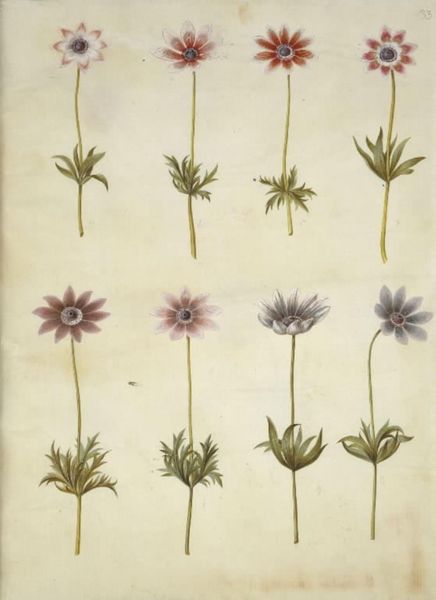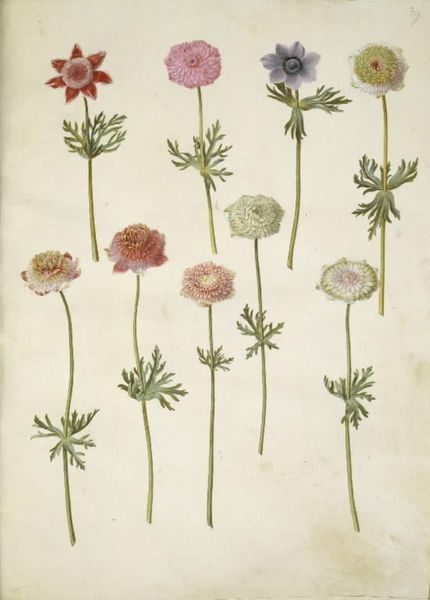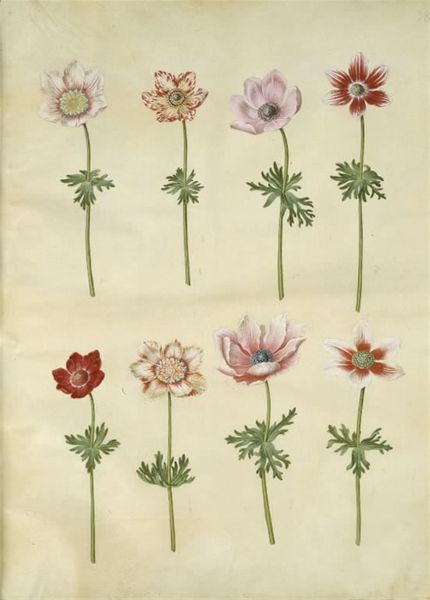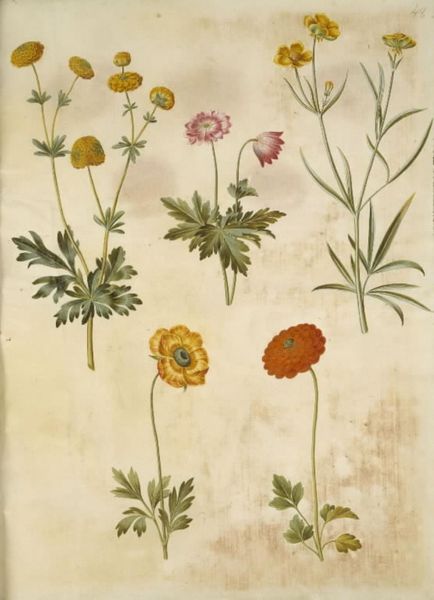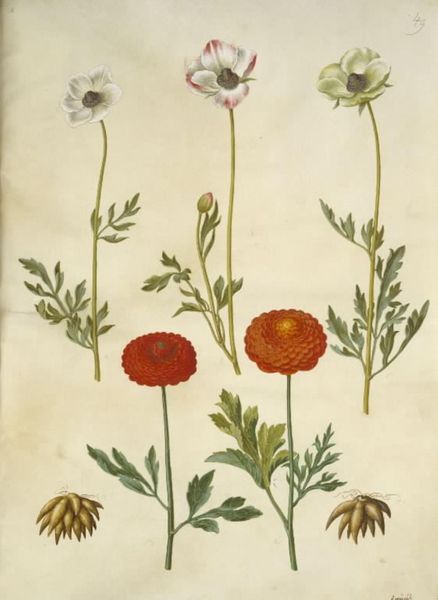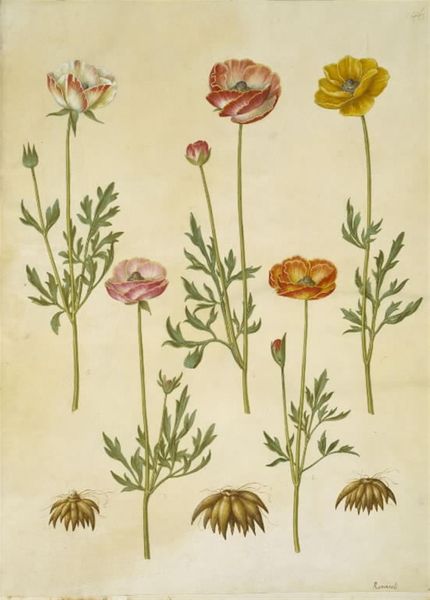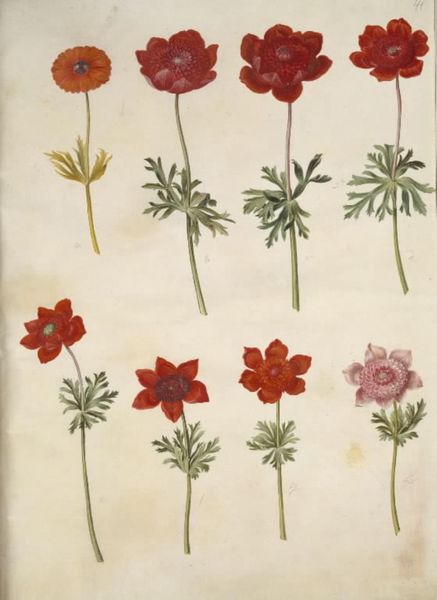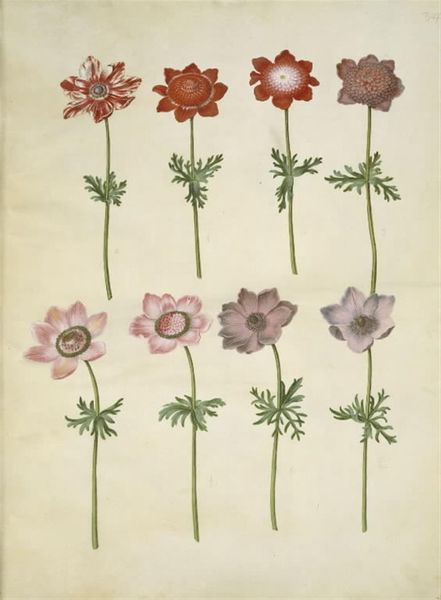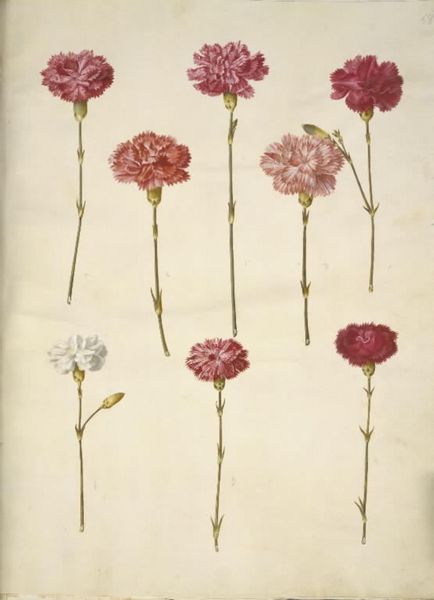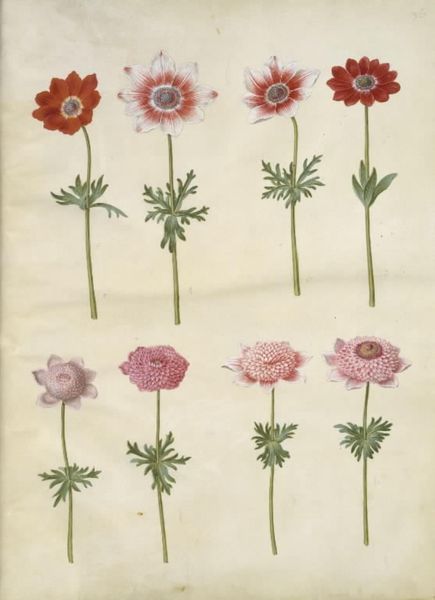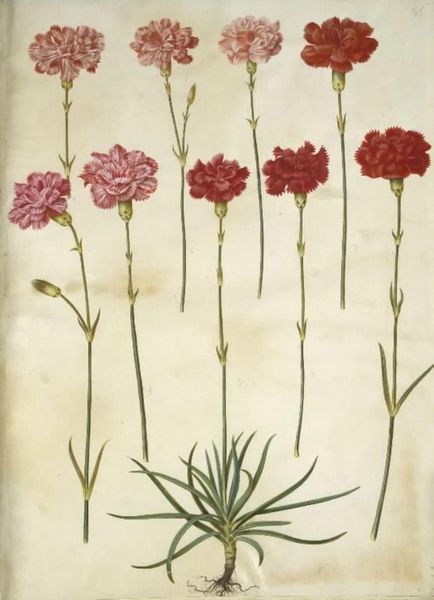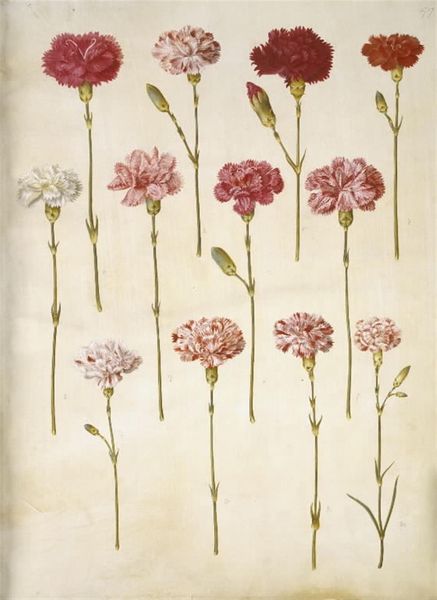
Anemone coronaria (fransk anemone); Anemone ×fulgens (skinnende anemone) 1649 - 1659
0:00
0:00
drawing, painting, gouache, watercolor
#
drawing
#
baroque
#
painting
#
gouache
#
watercolor
#
watercolor
#
realism
Dimensions: 505 mm (height) x 385 mm (width) (bladmaal)
Editor: This lovely sheet of Anemone coronaria and Anemone × fulgens flowers, made with watercolor, gouache and painting between 1649 and 1659 by Hans Simon Holtzbecker. What immediately strikes me is their isolated presentation and incredible detail. How might this have been used back in the 17th century? Curator: It is a beautiful example of botanical art, indeed. Beyond pure aesthetics, these were crucial visual documents, part of the rising scientific observation in the Baroque period. Think about it: printed illustrations were expensive and often inaccurate. A highly skilled artist like Holtzbecker would provide accurate and beautiful records for botanists, apothecaries, even wealthy landowners cataloging their gardens. How does that understanding change how you perceive the work? Editor: I guess it transforms it from just pretty flowers to a form of data collection. The artist almost becomes a scientific instrument! But does the artistic aspect suffer as a result? Curator: Not at all! In fact, it elevates it. Holtzbecker, operating within a patron-driven system, balances scientific precision with artistic flair, adding value to its knowledge. Look at the precision in the watercolors—he’s celebrating both science and artistry, catering to a specific cultural need. Consider the intended audience. Were they merely interested in scientific information, or did the painting also appeal to their social standing, conveying their ability to afford access to rare botanical artworks and new scientific information? Editor: That's interesting! So, art wasn’t just for the church or nobles then. It’s connected with emerging scientific and mercantile classes. Curator: Precisely! And the choice of imagery also plays a role. Anemones, like tulips, became associated with status and were collected by the elite. Do you think it shifts your interpretation knowing how enmeshed it was with cultural and social contexts? Editor: Absolutely. It reveals a lot about the intersection of science, art and wealth in that era. This art serves the need of public life in many subtle aspects. Thank you. Curator: My pleasure.
Comments
No comments
Be the first to comment and join the conversation on the ultimate creative platform.
